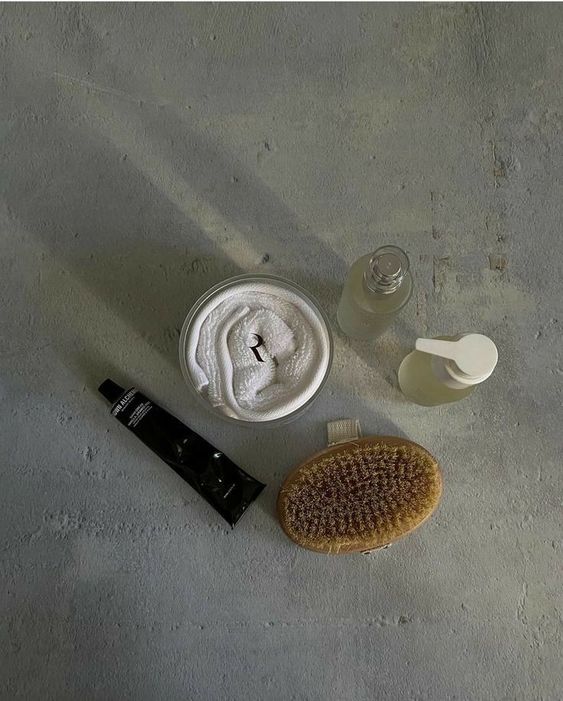
The skin is not a separate organ that works independently from other tissues, organs, systems and even the environment. Every single factor that comes in contact with or surrounds it plays a major role in its homeostasis (balance) and appearance. With that in mind, it makes sense to assume that altered circadian rhythms could affect its function. But, what exactly are they? How do they impact the health of the skin? And, is there something we can do to get them back on track and achieve healthy skin? If you want to find out the answers to these common questions, keep reading…
Defining The Circadian Rhythms: What You Should Know
[1][2]Circadian rhythms are cycles of biological, cognitive, and behavioral changes that occur every 24 hours.
These cycles are predominantly influenced by exposure to light and dark, and affect practically all living beings. The sleep-wake cycle, which we extensively talked about in a previous blog post, “The Connection Between Beauty Sleep And Your Skin”, is actually a light-dependent circadian rhythm that keeps us awake during the day and makes us sleep at night. Besides sleep patterns, our circadian rhythms regulate crucial functions such as body temperature, blood pressure, eating habits, digestion, heart rate, and hormonal balance, among many others.
Circadian rhythms should not be confused with the internal clocks, though. The latter are the ones that control the circadian rhythms thanks to a group of highly specialized proteins that interact with almost all bodily cells. This means that biological clocks can be detected in virtually every nook and cranny of our organisms. Surprisingly enough, humans´ clock-making genes are pretty comparable to those of fruit flies, fungi and mice.
From all these internal clocks, there is one that “runs the whole show”: the master clock. This clock is located in the hypothalamus and consists of approximately 20,000 neurons that make up the suprachiasmatic nucleus (SCN). The SCN receives input directly from the eye (through the retina), which explains why it is highly responsive to light and darkness. I bet most of you have heard about the hormone melatonin and its role in sleep. Well, the SCN is the structure that controls melanin secretion. It will tell the brain to stop melanin production in the morning, and at night it will do the opposite and make you feel tired and sleepy. This is how the circadian rhythm looks like:
- The big dip (3-7 am) : energy plummets and you are fully awake till 9 or 10 am.
- Energy goes up (10 am to 1 pm) : temperature, alertness and sharpness increases.
- Afternoon slump (2-5 pm): another energy dip takes place and you crave food big time.
- Getting drowsy (11 pm): melatonin starts to rise as soon as the sun sets, but peaks around 2-4 am and then gradually drops.
Circadian Rhythms And The Skin: How Are They Connected?
[3][4]Even though the skin does not have a retina, it does respond to messages from the SCN via the nervous system and hormones. Let's not forget that the skin is the organ that connects the internal environment with the external one thanks to its highly sensitive receptors. This means that the functions of the skin do stick to a periodicity pattern (circadian rhythm) that is heavily influenced by variations in humidity, temperature, UV radiation, pollution and even pathogenic microorganisms. In terms of the day-night cycle, the functions of the skin can be broken down as follows:
| DAY | NIGHT |
| Peaks from 12-3 pm | Peaks from 9 pm to 12 am |
| + Barrier recovery rate | + Barrier permeability |
| ↑ pH | ↑ Cell proliferation |
| ↑ Protection | + DNA repair |
| ↑ Sebum production | ↑ Itching |
| + Thickness | + Transepidermal water loss |
| ↑ Skin blood flow | |
| ↑ Skin penetration | |
| ↑ Skin temperature |
Based on this chart, it is clear that the skin needs more antioxidant protection and sebum regulation during the day. At night, on the other hand, we should take advantage of the greater permeability and increased repair functions in order to promote deep moisturization, nourishment and healthier skin renewal.
8 Factors That Hinder Our Skin's Circadian Rhythms
[1]Our circadian rhythms get out of synch when any, or a combination, of the following factors are present:
- Blue light exposure
- Extreme humidity and temperature
- Gene changes/mutations
- High levels of pollutants
- Jet lag
- Night shifts
- Poor dietary and sleeping habits
- Stress
Such factors produce changes on the skin that can be observed as:
- Acne
- Cancer
- Dark under-eye circles
- Dehydration/dryness
- Eczema
- Hyperpigmentations
- Inflammation
- Poor wound healing
- Premature aging (fine lines, wrinkles, and sagginess)
- Psoriasis
- Sensitivity
Tips On How To Reset Your Circadian Rhythms
Let's put it this way, making amends with your altered circadian rhythms requires commitment. There is no magic pill, no complex science behind it. You just need to take the list of the factors that wreak havoc on your rhythms and implement an effective neutralizing action.
- Make sure you sleep 7-9 hours per day and be consistent with the time you turn in and wake up. Please, revisit our “The Connection Between Beauty Sleep And Your Skin” blog post for more information on how to fine tune your sleeping patterns.
- Relax: you need to lower your cortisol levels whether it is by practicing meditation, doing breathing exercises, running, spending time in Nature, taking a bath before going to sleep, etc.
- Let the light guide your meals: ideally, you should leave at least 12 hours between your last meal and the first one. Start once the sun has risen and have dinner an hour or so before the sun sets.
- Shield yourself against blue light: buying protective blue light glasses is a must these days. Besides preventing eye strain, headaches, fatigue, etc., they also promote normal melanin levels.
- Keep yourself well-hydrated: drink water whenever thirsty and eat plenty of water-rich foods like fruits and vegetables.
- Maintain a comfortable temperature: you might need to bundle up or wear light clothes, depending on the environmental conditions.
- Get medical/nutritional treatment for any underlying conditions.
-
Skin-wise, focus on the following actives:
- Morning (antioxidant protection): aloe vera, astaxanthin, bisabolol, argan oil, berries´ extracts/oils, coenzyme Q10, pomegranate extract/oil, grape extract, shea butter, vitamin C, titanium dioxide, zinc oxide, etc.
- Night: algae/seaweed, bakuchiol, bromelain, hyaluronic acid, papain, peptides, pumpkin enzymes, niacinamide, retinoids, etc.
When it comes to skincare, circadian rhythms shouldn't be taken for granted. They are so deeply connected to a glowy appearance that many scientists are now beginning to design products and treatment protocols that tune into and regulate the rhythmicity of the skin. Think about programmed time-delivery of ingredients coupled with sound sleep, a balanced diet, exercise, stress reduction, etc. Despite the current research available, there is a whole lot that we still need to learn about technologies that are capable of getting our skin back up to par. Who knows, perhaps the solution to our rhythmic woes could be found in a cream jar. To learn more about your skin’s health, make sure to visit our Instagram ,Facebook, Pinterest, and Linkedin platforms.
References:
[1] https://www.nigms.nih.gov/circadian-rhythms.aspx
[2] https://www.ncbi.nlm.nih.gov/PMC1855314/




